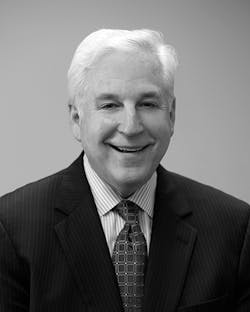Transitions Roundtable
Question: I’m buying a practice with a good team in place, but I can barely afford their salaries. The prior owner gave the team a dollar an hour raises every year like clockwork. How do I retain them while finding a more affordable solution?
Practices come in all shapes and sizes. Some have large volumes with low profits while others have medium volumes with large profits. Some have overhead that’s under control, with the exception of employee costs. This happens often. Usually the owner received no practice management advice while running the practice, and he or she instituted too many hourly wage increases.
Part of your due diligence is to ask the owner about employee costs and positions. Ask when employees were hired, their current hourly rate, their wage increases, and what fringe benefits they receive. Good teams should pay for themselves. They should be well-trained, believe the philosophies of the practice, present cases and gain case acceptance, and be team players. But the answer to whether a good team can pay for itself lies within the metrics of the practice.
At the Academy of Dental CPAs, we constantly study the metrics surrounding employee costs. We have set metrics along with various benchmarks as they relate to employee costs. These are based on the average annual collections of a general dental practice. As you perform your due diligence, try to keep these employee costs as outlined below in a range of 25% to 26% of collections, not to exceed 28%.
- Chairside salaries: 7% to 8%
- Clerical salaries: 7% to 8%
- Hygiene salaries: 9% to 10%
- Payroll taxes: 1% to 2%
- Other fringes: 1% to 2%
- Employee costs: 25% to 30%
When you purchase a practice, the largest component of the purchase price is goodwill. Goodwill is made up of (1) the continuity of the patients, and (2) the continuity of the team. Knowing that employee costs are out of line, I suggest you keep the team in place for at least six months in order to go through at least one recall cycle. By doing this, patients will recognize the team, but more importantly the team can introduce you, the new provider, and build confidence in you. During this phase you may have to reduce your salary in order to create affordability in your practice.
Be sure to ask your dental CPA what the fair market value of the salaries are by department and within the geographical territory where your practice is located. Good luck!
It appears that you have every intention of retaining the staff, and that’s smart thinking on your part. I’ve seen situations where a new purchaser terminates most of the staff because employee overhead is too high. If the owner has retired and the purchaser is new to the practice, there is a good probability of patient attrition among patients who travel a reasonable distance. This may occur when patients visit the office for the first time after the sale, when there are no familiar faces and the experience is less than optimal. Chances are good those patients will look for a new dentist closer to home.
To reduce this risk, we recommend that you give your team a chance to perform their duties and then evaluate everyone after the first six months of ownership. If there are lingering staff performance issues or the practice’s economics do not improve, you can make changes to rectify the situation. In lieu of the annual pay raise, consider instituting a staff bonus program that can be offered to all team members. In order to determine if you can afford a bonus/incentive plan, you need to calculate your practice break-even point to determine how much of a bonus you can afford to offer. Some of the metrics that can be included in a staff bonus plan are monthly gross receipts, monthly clinical production, canceled/failed appointment rate, hygiene retention, and new patients per month.
Taking something away from any employee is always challenging, so implementing a bonus plan may cause an uproar. But if presented properly and your team can see the big picture, they may be better off than what they had been accustomed to. If the bonus goals you establish are realistic and achievable, you may find that the practice will grow faster, and you and the team will all be winners!
There are a couple of aspects to consider when answering this question: (1) What is the practice cash flow? and (2) Is my goal to protect the goodwill of the practice?
Let’s address the practice cash flow. In its simplest definition, if after all practice expenses are paid you are able to pay yourself a salary, pay the debt service on the bank note, and there is money left over, then the practice has a positive cash flow. This means there is enough cash flow to support the salaries of the staff, and therefore you should not make any immediate changes.
Another important piece to consider is protecting the goodwill. One way to do this is not to make wholesale changes to the practice, especially to the staff. Believe it or not, your front office team is made up of people who project the image of the office to patients. The staff can make or break the practice without a doctor even knowing it. Keeping a strong team in place will help you maintain the goodwill until you get to know the patients and are comfortable running the office.
Additional considerations before making any staff changes are the social and economic factors of the area. Is there a shortage or an abundance of qualified employees? If you do scale back on staff pay, will they leave? As I stated, it is best to do nothing for at least the first six to 12 months and adjust accordingly after that.
ALLEN M. SCHIFF, CFE, CPA, is a founding member of the Academy of Dental CPAs. This group of knowledgeable CPA firms specializes in practice management services for the dental industry. Schiff serves on the ADCPA executive committee and is the current president of the ADCPA. Reach him at (410) 321-7707 or [email protected].
THOMAS L. SNYDER, DMD, MBA, is the director of transition services for Henry Schein Professional Practice Transitions. He can be reached at (800) 988-5674 or [email protected].
MATT SCHERER has more than 14 years in the dental industry assisting practicing dentists, dental schools, suppliers, and others throughout the US. From his banking experience he gained knowledge of the specific financial considerations dentists must take into account, and he has been involved in over 550 dental transactions totaling more than $226 million.



